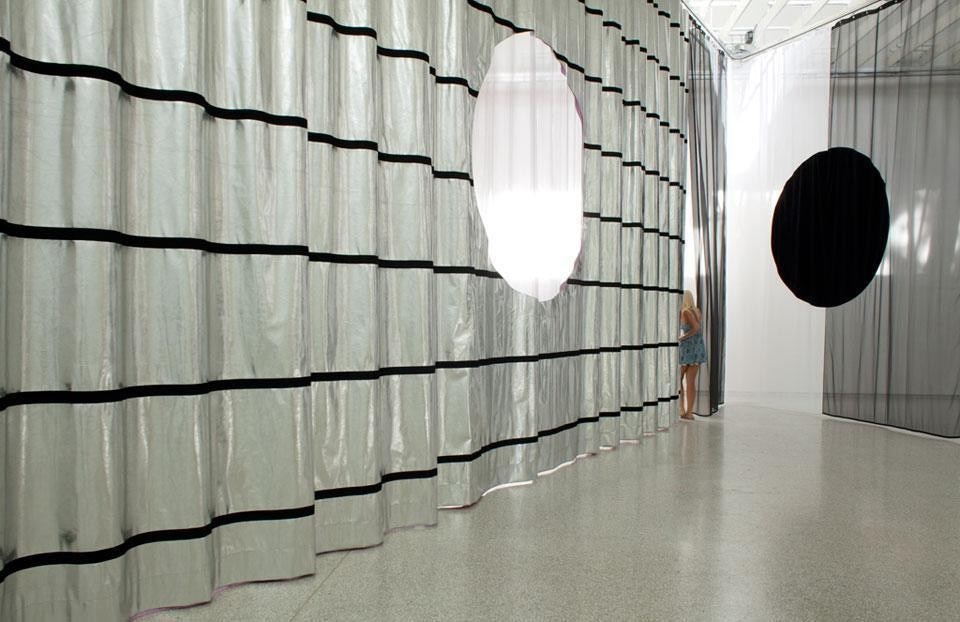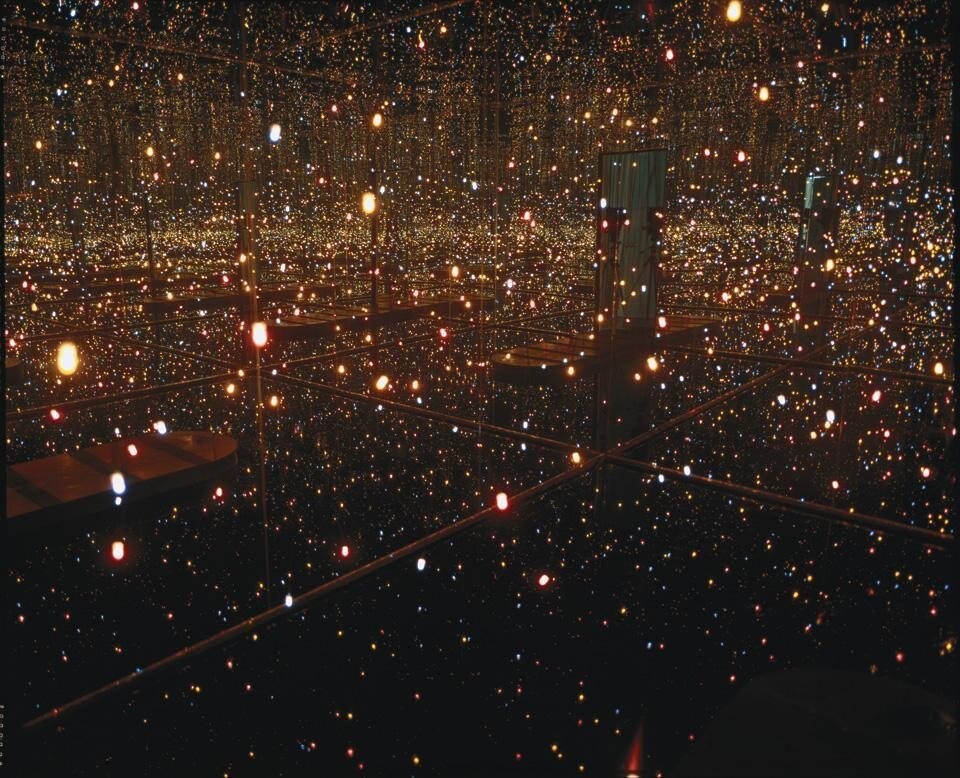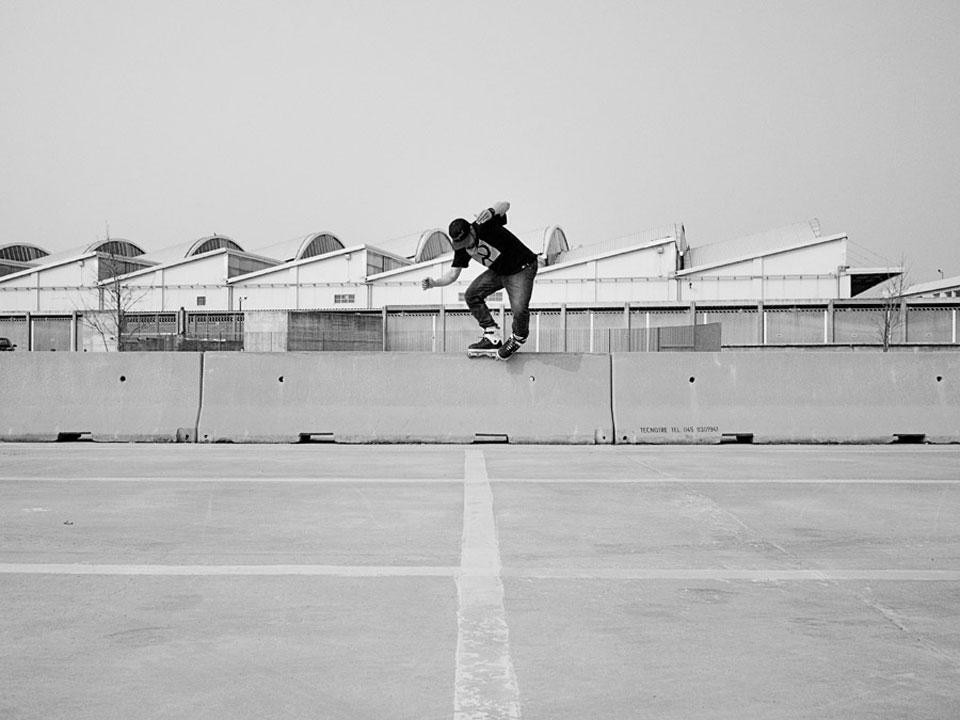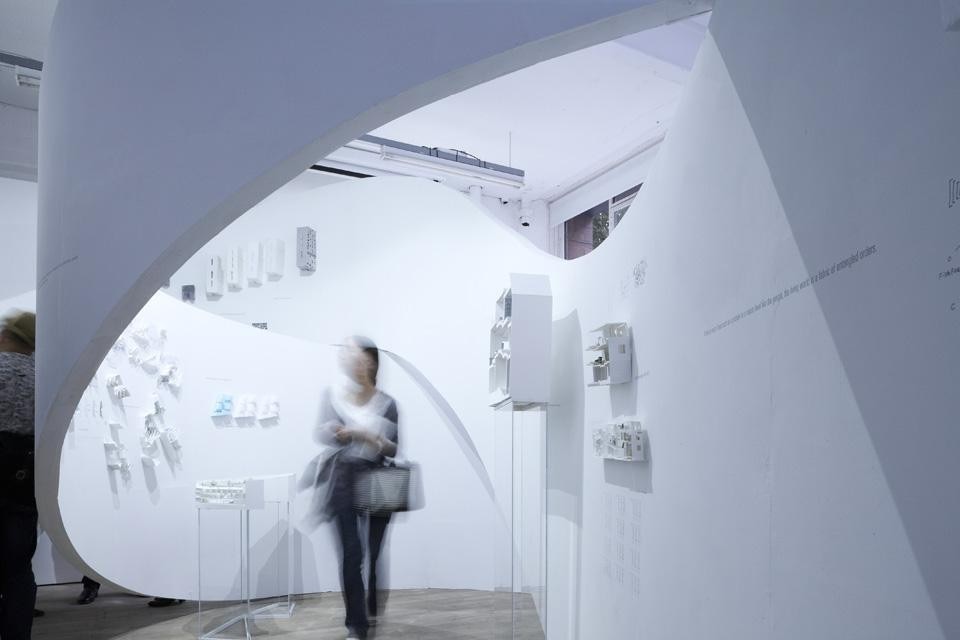In New York, Yayoi Kusama's retrospective exhibition at the Whitney Museum of American Art spins obsession, passion, and colourful hallucinations into a singular universe where viewers are allowed to enter. Finally this week's photo-essay unveils Blade Diary, Pietro Firrincieli's black and white compositions depicting a suspended, "colour-free" dimension where movement in space and time seems frozen.
An entangled approach
An architecture report from London by Catharine Rossi
The entwinement of structure and display in Tangling is a highly effective device. It not only adds an experiential quality conventionally lacking in architectural exhibitions, but also materialises the values of complexity and interconnectivity that underpin the architect's approach. As the models, sketches and architectonic statements assert, this is a show for architects, but the curators are attuned to the need to balance the demands of this specialist and the wider public audience that pass by the windows of this London street. With the latter in mind, while the exhibits do shed light on the process involved in the form creation of Hirata's work, I did feel the need for more explanation to further understand the origins and development of the architect's conceptual approach given its import here. This one small criticism aside, this is ultimately a densely packed and rich show of a culturally aware and environmentally sensitive architect.
[Read the full article]

An art report from New York by Emily Weiner
Kusama's most recent retrospective, organized by the Tate Modern in London and making its last stop now at the Whitney Museum of American Art, does not disappoint for lack of iconic works from that golden NYC period: One gallery is dedicated to Kusama's obsessively painted Infinity Net paintings (outsize canvases covered entirely with small and white, scalloped brushstrokes) from 1959–61, while another room showcases her dizzyingly wrought Compulsion Furniture (Accumulation) from the early 1960s, in which she affixed hundreds of fabric-sewn, tubular forms to common household objects — ultimately creating a roomful of Pop sculptures personifying a fully furnished and compulsive psychic interior. Another room is devoted to Self Obliteration — a psychedelic film which mashes up images of Kusama's paintings and installations with many of her 1967 performances: scenes follow the artist riding a polka-dotted horse through upstate New York, painting spots on a pond's surface, or — cutting back to the city — directing orgiastic body-painting parties, held inside her own installations of mirrored walls and blinking lights.
[Read the full article]
Exquisite Corpse
An op-ed from Sydney by David Neustein
Exquisite Corpse is a game in which participants write or draw on a folded page, concealing each turn from the next until a cumulative text or picture is formed. Sam Jacob recently proposed the game be used as an alternative architectural approach. Based on "multi-authorship", wrote Jacob, the game results in "accident and un-logic", and might therefore "help us out of the self-replicating horror of contemporary architecture and urban design."
Jacob may not be aware that a city-scale staging of Exquisite Corpse has been taking place in Sydney for over 20 years. In this case, the Museum of Contemporary Art (MCA) has been used in lieu of a folded page. Since 1991 the MCA has occupied an Art Deco-era office building opposite the Sydney Opera House. In 1996 and 2001, international competitions were held for proposals to renovate and extend the museum. Winning schemes by Kazuyo Sejima and Sauerbruch Hutton were never realised for variously cited reasons, including lack of funds, political conservatism, architects' naivety and even — in a city barely 200 years old — the onsite discovery of historical remains. Yet behind those reasons was a powerful subtext: the authorities' fear that any architect's vision would "compete" with the iconic Opera House, our Scandinavian Sphinx. In 2002, following the second competition's failure, the MCA's director Elizabeth Ann Macgregor and her board arrived at a radical conclusion: there would be no vision.
[Read the full article]

An architecture report from Venice by Rita Capezzuto
Visitors entering the Dutch pavilion at this year's 13th International Architecture Exhibition — Venice Biennale will need to be more than simply interested and curious. They will require a special quality — an inner readiness to wait and allow time for things to happen. It may seem obvious but it is not easy to change the increasingly widespread attitude that expects to experience cultural events quickly, especially those forming part of larger ones and packed with numerous simultaneous proposals.
The installation, designed by Petra Blaisse of Inside Outside and curated by Ole Bouman, director of NAi, appears very simple: two full-height fabric curtains glide slowly through the interior of the historic building designed by Gerrit Rietveld and take it over. Their movement is steered by tracks fixed to the ceiling, governed by a timer that is programmed to alternate movement and pause 12 times for 96 seconds. It takes time to fully grasp the essence of the work. Blaisse says: "We enhance the time phenomena because the curtain movement is about time; because the light coming into the pavilion is also about time; as the installation shifts during the day, the shadows and light patches on the walls, curtains and floor change position with the sun. We put mirrors on the roof to catch the sun in the opposite direction: the reflections go from west to east and the sun shifts from east to west whereas the curtains move through the space in twelve positions — like the twelve hours of the day and night."
[Read the full article]

A photo-essay by Pietro Firrincieli
Owning roller skates from the age of five, at the age of fifteen Pietro Firrincieli added a video camera — later replaced with a photo camera — to his metropolitan kit. Firrincieli then decided to channel all his energy into his 2011 Blade Diary, realising the direction his work should take.
The photographs he has built up over the years do not seek out spectacular shots of the bladers and skaters' performances but pan out to capture the city. Using a 40 mm lens, this acrobatic photographer unveils different potential ways to explore and experiment with snippets of the everyday urban scenario. Context is never a backdrop to his black and white composition, but is instead placed on the same level as the figures, depicting a suspended, "colour-free" dimension where the movement in space and time seems frozen.
[Read the full article]


